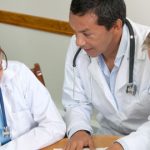The Need for Change
Philosophical and methodological calls for curricular reform in the medical and lay literature are not new, but contemporary advocates for reform decry an academic product that fails to emphasize concepts of justice, courage and truthfulness. Some methodological innovations, such as the advent of the flipped classroom, have challenged canonical didactic learning. Nonetheless, it is increasingly recognized that traditional medical education does not necessarily guarantee the attainment of entrustable levels of independent knowledge, skills and attitudes.
The phrase entrustable professional activities (EPAs) has been used for decades in medical education to describe specific tasks, skills and procedures that vary over time in the degree or manner in which they are supervised and evaluated. The concept, if not the phrase, is familiar to all who participate in medical education. Trainees are expected to skillfully accomplish certain activities with increasing independence as they proceed through their educational process. Supervisors must trust the ability of trainees to do so. In the current political climate, we may do well to consider how we can raise the level of trust in medical education from the communities we serve as well.
In the process of teaching and assessing EPAs, educators are tasked with assessing higher order reasoning skills. To achieve this, faculty rely on surrogate measures of proficiency: testing raw knowledge and determining how much supervision a given trainee requires at a given developmental stage. Unfortunately, neither a shared nomenclature nor a shared model exists among educators to translate competency frameworks to real-world medical practice.
Novel modes of collaboration could involve community testimonials paired with expert commentaries. In this manner, altruism, compassion & integrity all may be captured as meaningful learning objectives.
Despite calls to assess more complex and abstract attributes, knowledge acquisition remains the most common measuring stick of proficiency and entrustability. Community input is left out of the assessment equation. The unique juxtaposition of science and commitment to meaningful engagement at the level of the individual demands socially accountable medical education, yet how EPAs align with the priorities of the communities that medical schools serve is rarely asked.
EPAs also encompass such attributes as professionalism and empathy that defy readily quantifiable measures. Further, consensus among faculty is lacking regarding the actual level of entrustment needed to certify a given EPA. Educators are constrained by the public demand for proof of quality.
Endorsing EPAs is a process hampered by inadequate outcome measures of quality. Moreover, endorsing EPAs fails to account for the importance of mentoring and of role-specific education. At the same time, it fails to engage the community in assessing trainees’ sensitivity to cultural and socioeconomic priorities. And because assigning entrustability is a values-based activity without community involvement, granting the right to unsupervised practice fails to live up to the EPA’s promise of safe care defined by local standards.
This burden on educators carries the danger of a reflexive embrace of a posture of unassailable authority when advancing trainees down the path of entrustability, potentially at odds with community values. EPA assignment without community input may even place specific groups of patients at risk, leading to inequality on, for example, socioeconomic status.
Educational curricula concerning the social determinants of health, including unemployment, immigration status and homelessness, may be prone to implicit bias when neglecting pluralistic input.


